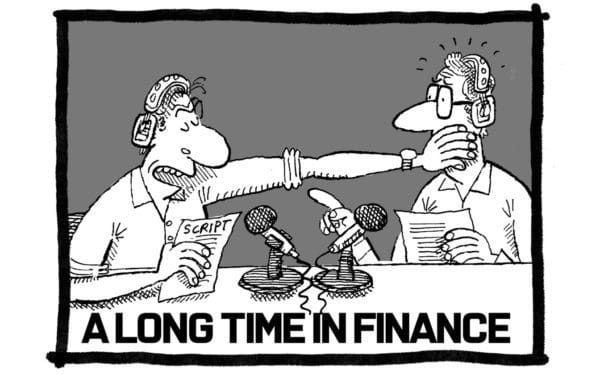A personal view from Ian Stewart, Deloitte’s Chief Economist in the UK.
Just as the global economic outlook has started to look up, along comes trouble in the banking sector. In less than a fortnight three mid-sized US banks have failed and Credit Suisse has been fast-tracked into a takeover by UBS.
The events of the last fortnight represent the most challenging moment for the banking system since the early days of the financial crisis in 2008. As has happened so often before, a combination of rising interest rates and slowing growth are testing the financial system.
The big lesson from 2008 is that the authorities need to move swiftly and in scale to counter a banking crisis. The response from the authorities in the US and Switzerland has been forceful, but so far it has not calmed markets.
The demise of Silicon Valley Bank (SVB), America’s 16th largest bank, on 9 March was the biggest bank failure since the 2008 financial crisis. The tech companies who were its main customers, facing a more difficult climate, had sought to draw down on their facilities. To meet demand for cash SVB was forced to liquidate holdings of US mortgage-backed securities at a loss, raising the possibility that the bank would be unable to fulfil its commitments. Investors took fright and rushed to withdraw their funds, forcing the regulator to take control. SVB’s failure came the day after Silvergate Capital announced the liquidation of its bank and two days before Signature Bank was taken over by regulators. In the age of digital bank accounts, where rumours spread like wildfire across the internet, bank runs can happen very quickly.
All three of these banks were thought by regulators to be too small and specialised to be important to the wider functioning of the banking system. Indeed, in 2018 the regulations required under the Dodd-Frank Act of 2010 were eased for regional and mid-sized banks, including SVB. Yet faced with a crisis, and the risk that other regional banks could come under pressure, the US authorities reacted forcefully.
To reassure markets and limit contagion policymakers introduced two measures. First, to reduce the risk of further bank runs the US Treasury lifted the $250,000 bank deposit guarantee for SVB and Signature Bank, ensuring all deposits at these institutions will be covered in full. Second, the Federal Reserve has boosted the value and the liquidity of bank assets by undertaking to provide one-year loans to banks against the par value of holdings of US Treasuries and certain other related assets such as mortgage debt.
The par or face value is above the current market value of these assets and US banks have rushed to avail themselves of the offer, taking over £300bn of loans from the Fed in the last week. After almost a year of quantitative tightening, in which the Fed shrunk its balance sheet by selling bonds it has bought since 2008, the Fed’s balance sheet is expanding again.
The major banks have also stepped in. In a show of confidence a group of major US banks last Thursday deposited $30bn with First Republic Bank. It had suffered a flight of deposits and a precipitous decline in its share price following the failure of SVB.
In terms of financial stability, the response of the Treasury and the Fed, and the support offered by the big banks, is shock and awe stuff. But it hasn’t, so far, turned the tide. Shares in First Republic dropped 35% on Friday and are down by over 80% this month. Other mid-tier regional banks also saw further decline in their share price. Depositors have carried on shifting funds out of smaller US banks into larger ones.
Zurich-based Credit Suisse is a global bank with a strong capital position, utterly different in scale and business model from SVB in California. But profitability has been poor and Credit Suisse’s standing has been tarnished, including through involvement with the collapsed financial services firm Greensill and the hedge fund Archegos. Even before this latest crisis, in late February, Credit Suisse shares were trading at just 20% of their value two years earlier.
The emergence of weaknesses in the US regional banks in the last fortnight prompted investors to look elsewhere for frailties. The timing could hardly have been worse for Credit Suisse coinciding with an announcement from the bank that it had found ‘material weaknesses’ in its financial reporting. Then came the news that the bank’s biggest shareholder, Saudi National Bank, would not provide it with more capital.
Credit Suisse shares dropped by almost 30% last Wednesday, only to bounce back on Thursday following the announcement by the Swiss National Bank that it would provide over $50bn of liquidity. Renewed selling on Friday, with the share price closing 8% down, and the loss of further deposits, led to yesterday’s takeover of Credit Suisse by UBS.
So what happens next and what does this mean for the global economy?
First, the good news. The banking sector is more tightly regulated than it was 15 years ago. Banks are better capitalised, run higher levels of liquidity and have been subject to rigorous stress tests to gauge their ability to cope with shocks. Medium-sized European banks have not had the easier regulatory regime of their US counterparts. The authorities are on high alert and are determined to move quickly and decisively. This feels different from 2008.
Now for the bad news. The last fortnight shows that investor sentiment can turn quickly and that deposits are footloose. Problems can migrate quickly and unexpectedly from one part of the system to another. Even aggressive policy interventions, through the provision of liquidity and protecting deposits, don’t always turn the tide. Sometimes, as in the case with Credit Suisse, more radical change is needed.
Slowing growth spells stress for households and corporates and rising levels of loan losses for banks. The value of assets can fall rapidly when interest rates rise. SVB’s troubles were due to a failure to protect itself against the risk of higher interest rates hitting the value of its mortgage portfolio.
Material stress in the banking system tends to dampen business confidence and leads to a tightening of financial conditions. Banks pull back on lending and falling equity and bond prices translate into a higher cost of capital. Even before the current problems in the banking sector emerged, credit conditions had tightened significantly. That process has further to run and it adds to the risks to growth.
Our own measure of financial stress for the UK, created by my colleague Edoardo, rose sharply following September’s mini-budget before falling back in February. Edoardo expects it to surge in March when all the data are available.
We would also expect the damage to the real economy from financial stress, as measured by our Economic Stress Index, to keep trending higher as problems in the banking system and the effect of higher interest rates feed through.
Risk can radiate out from the banks to other parts of the financial system. Swings in the prices of government bonds driven by last week’s events hit market liquidity and raised concerns about the smooth operation of this crucial market. (On Sunday a group of the world’s leading central banks responded by announcing a set of measures to improve market liquidity.) Following the tightening of banking regulation after the financial crisis a good deal of risk-taking activity has migrated to the less regulated part of the system, the so-called shadow banking sector, including private equity, hedge funds and money market funds. Although thought not to be of systemic importance to the economy, the shadow banking sector accounts for a good deal of financial activity. It is not clear how it would cope if it faced losses and investor flight as have been seen in a handful of US banks in the last fortnight. The meltdown in liability-driven investment strategies in UK pension funds triggered by a fall in the value of UK gilts last September is a recent example of how financial structures can unravel when asset prices fall.
Financial markets have interpreted last week’s turmoil as a deflationary shock that will slow growth and reduce the need for central banks to raise interest rates. The standard response of central banks to financial shocks is to loosen, not tighten policy. This creates a dilemma for central banks. Inflation remains far too high and the Fed and the European Central Bank have spent the last month signalling that they plan to raise rates.
The ECB pressed ahead with a 50bp rate rise last Wednesday, raising rates to 3.0%, but suggested it would be cautious about making further increases. The Fed has a difficult call to make when it meets to set rates on Wednesday. If it raises US rates it risks over-tightening financial conditions, hitting growth. If it leaves rates unchanged markets might think it has gone soft on inflation.
Until recently the economic news has generally been positive. Lower energy prices and the reopening of China’s economy have caused the IMF and the OECD to raise their forecasts for global. Last Wednesday the UK’s official forecaster, the Office for Budget Responsibility, reversed course and said the UK would avoid a recession this year. That now seems premature. Recent turmoil in the banking system raises the odds of a recession. By how much depends on what other problems emerge and on the skills of policymakers.
Write to us with your comments to be considered for publication at letters@reaction.life




